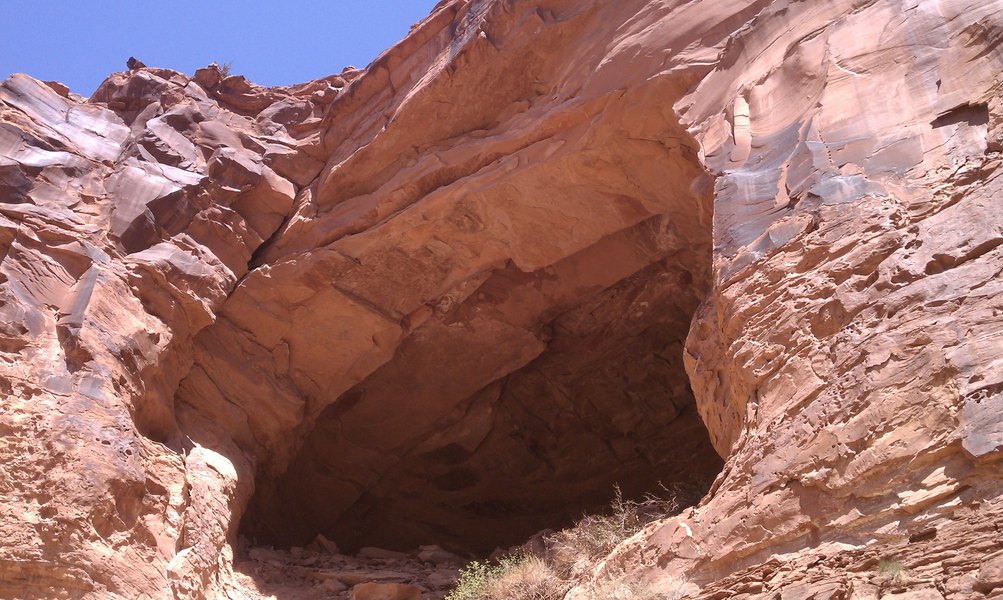Trapper Cited After Dog Caught and Killed in Beaver Trap
/s3.amazonaws.com/arc-authors/sltrib/d1bbda75-6347-4a25-8228-4f3e915653b8.jpg)
While hiking in a canyon near Moab with his teenage owner last month, an Australian/pit bull mix got caught in a beaver trap.
The trap, designed to collapse on the body of the animals it catches, instantly killed the dog.
Investigators with the Division of Wildlife Resources tracked down the owner of the trap, which wasn’t modified to the state’s requirements.
On Feb. 11, the Moab teenager and her dog were hiking in Hunter Canyon, about 8 miles west of town. The dog ran toward a small stream, became ensnared in the trap and fell into the water, according to Wolford.
The trap killed the dog before the teenager had a chance to free her pet.
“Our hearts definitely go out to the young girl here, and her family, because they lost a family member. We understand that and we’re very sorry,” Wolford said.
The box-shaped trap in question — with a roughly 12-inch-square opening — should have been modified to prevent animals that aren’t the trap’s target from triggering it, Wolford said.
The trapper has been charged in Grand County Justice Court with six counts of unlawful methods of trapping, a class B misdemeanor. Three of the counts are for an unmodified trigger on the body-gripping trap. The other three are for having an unmarked trap.
The trapper has entered not guilty pleas and requested a bench trial, which is scheduled for April 11.
“It’s a very rare thing for something like this to happen,” Wolford repeated, adding, “but it does.”
Some 15 years ago, a fly fisherman’s dog was killed in a beaver trap near Kamas, in the Peoa area, he said. That dog and the one in Moab have been the only ones killed by traps “for a long time,” he said.
More common is dogs getting snared, but not seriously hurt, in leg-hold traps — for example, a wire loop that tightens, or the traditional trap with a steel jaw that snaps closed (those are required by law to include a spacer that creates a gap around the animal’s bone).
Dogs are usually rescued, but he has heard stories of dogs getting trapped and then dying from something else, such as starvation or dehydration.
But that shouldn’t happen, Wolford said, because trappers are required to check their traps every 48 hours. Once or twice he has rescued a pet that had gotten stuck after the season ended in an abandoned trap someone forgot about.
Or, he has heard of dogs getting ensnared, then falling into streams and drowning.
Just over six years ago, a Sandy family’s dog drowned in the city’s Creekside Park after a different type of beaver trap snared the animal around the neck. The 4-year-old dog died, according to a 2012 Salt Lake Tribune story.
So far this season, Wolford said, he has freed one or two dogs from traps.
Not every dog owner calls authorities when their pet gets trapped, if they can work the trap themselves. The DWR doesn’t keep records of how many pets it frees unless the trap was illegal.
But Wolford could say that during some fur trapping seasons, he has freed 10 to 15 dogs.
Between the season’s dates of late September to March or April (depending on the animal), trappers place traps on ledges, near streams and around big rocks and trees, according to Wolford.
There is no state regulation that requires trappers to stay away from hiking trails.
“We try to encourage our trappers to stay away from populated areas … but they don’t always do that. They have free choice to go wherever they’d like to go,” Wolford said. “All we can do is give them suggestions.”
He doesn’t want that to discourage anyone from going outside.
“We live in a great state and have a lot of awesome natural resources right by town,” he said.
Just keep your pets within sight, he added.
“You’ve got the hikers, you’ve got your hunters, you’ve got your trappers, you’ve got your fishermen,” Wolford said. “It’s important to recreate together.”
Read Full Article: Fur Trapper Charged for Dog Death in Trap



